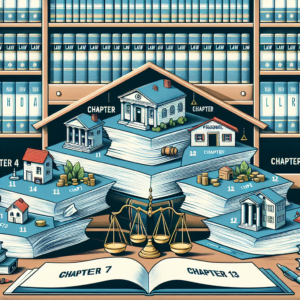
Landmark court rulings have the power to reshape societal norms, influence legislative agendas, and redefine the interpretation of constitutional rights. These decisions often emerge from the crucible of social upheaval and legal contention, reflecting the evolving values of society. As courts grapple with contentious issues, their rulings can serve as catalysts for change, prompting shifts in public policy and individual rights. This article explores several pivotal court cases that have left an indelible mark on American society and law, illustrating how judicial decisions can transcend the courtroom and reverberate through the fabric of everyday life.
1. Introduction: The Impact of Landmark Court Rulings on Society and Law
Landmark court rulings are not merely legal decisions; they are pivotal moments that can alter the trajectory of societal norms and expectations. The influence of these rulings extends beyond the immediate legal implications, often igniting public discourse and activism. They serve as a reflection of the prevailing social attitudes and can catalyze significant changes in legislation and policy. The rulings of the Supreme Court, in particular, have the authority to set precedents that guide lower courts and shape the interpretation of the Constitution. As such, understanding the impact of these decisions is crucial for grasping the complexities of American law and society.
2. Historical Context: Understanding the Legal Landscape Before Key Decisions
Before landmark rulings, the legal landscape is often characterized by entrenched norms and systemic inequalities. For instance, prior to the mid-20th century, segregation was legally sanctioned in many states, creating a society deeply divided along racial lines. Similarly, reproductive rights were largely unrecognized, leaving women with limited autonomy over their bodies. The legal frameworks in place often reflected the prevailing prejudices and power dynamics of the time, making it difficult for marginalized groups to advocate for their rights. Understanding this historical context is essential to appreciate the significance of the court decisions that challenged and ultimately transformed these inequities.
3. Case Study: Brown v. Board of Education and the Fight Against Segregation
One of the most consequential rulings in American history is Brown v. Board of Education (1954), which declared state-sanctioned segregation in public schools unconstitutional. This landmark decision overturned the precedent set by Plessy v. Ferguson (1896), which upheld the “separate but equal” doctrine. The ruling was grounded in the Equal Protection Clause of the Fourteenth Amendment and recognized that segregated schools were inherently unequal, thus violating the rights of African American children. Brown v. Board not only dismantled the legal framework supporting segregation but also galvanized the Civil Rights Movement, inspiring activists to challenge racial discrimination across various sectors of society.
4. The Ripple Effect: How Roe v. Wade Reshaped Reproductive Rights in America
Roe v. Wade (1973) is another landmark ruling that fundamentally altered the landscape of reproductive rights in the United States. By recognizing a woman’s constitutional right to privacy, the Supreme Court effectively legalized abortion, allowing women greater control over their reproductive choices. This decision sparked intense debate and mobilized both pro-choice and pro-life movements, leading to ongoing legal and political battles over reproductive rights. The implications of Roe v. Wade extend beyond abortion access; it has influenced discussions around women’s rights, healthcare, and bodily autonomy, highlighting the complex interplay between law and personal freedom in a democratic society.
5. Modern Implications: Obergefell v. Hodges and the Evolution of Marriage Equality
Obergefell v. Hodges (2015) marked a significant milestone in the fight for LGBTQ+ rights, as the Supreme Court ruled that same-sex marriage is a constitutional right under the Fourteenth Amendment. This decision not only legalized same-sex marriage nationwide but also affirmed the dignity and equality of LGBTQ+ individuals in the eyes of the law. The ruling was the culmination of decades of advocacy and legal battles, reflecting a broader societal shift towards acceptance and recognition of diverse sexual orientations. Obergefell v. Hodges has had lasting implications, influencing subsequent legislation and fostering a more inclusive understanding of civil rights in America.
6. Conclusion: Reflecting on the Enduring Legacy of Transformative Court Decisions
The enduring legacy of landmark court rulings is evident in their profound impact on American society and law. These decisions have not only reshaped legal precedents but have also catalyzed social movements and influenced public policy. As society continues to evolve, the role of the judiciary remains critical in addressing emerging issues and safeguarding individual rights. The transformative nature of these rulings serves as a reminder of the power of the law to effect change and the importance of an independent judiciary in upholding the principles of justice and equality. As we reflect on these pivotal moments, it is clear that the fight for civil rights and social justice is an ongoing journey, one that will require vigilance and advocacy to ensure that the ideals of liberty and equality are upheld for all.
In conclusion, landmark court rulings are not merely historical footnotes; they are pivotal moments that have shaped the course of American law and society. From the fight against segregation to the recognition of reproductive rights and marriage equality, these decisions reflect the ongoing struggle for justice and equality. As we continue to navigate complex social issues, the lessons learned from these transformative rulings will remain vital in guiding future legal and societal advancements. The legacy of these cases serves as a testament to the enduring power of the judiciary to influence change and uphold the principles of democracy.



















